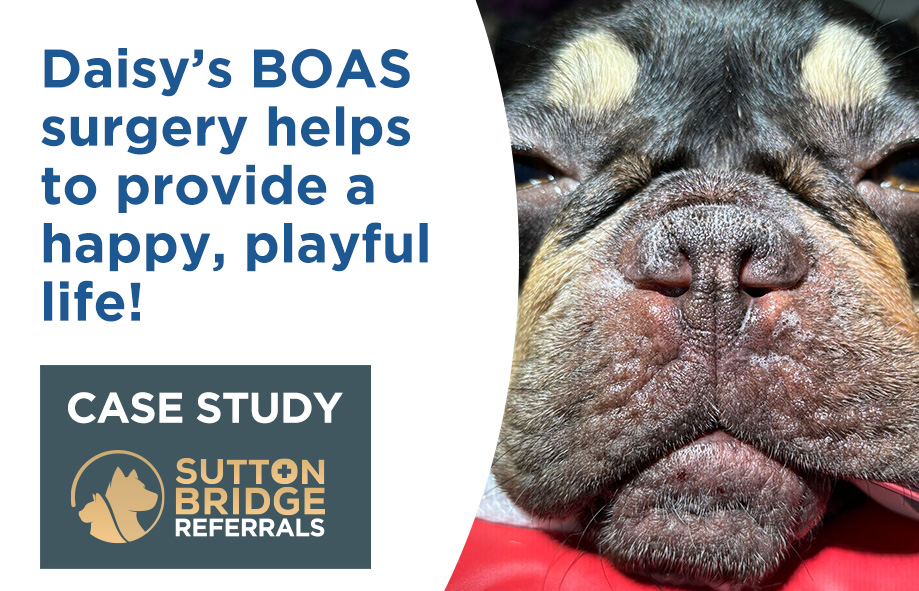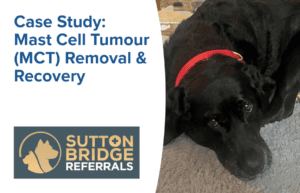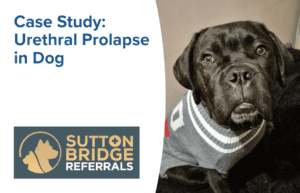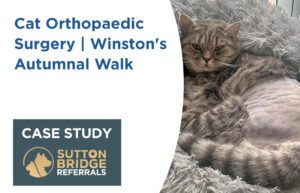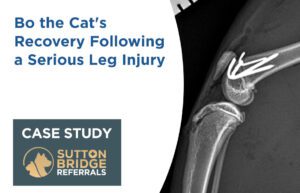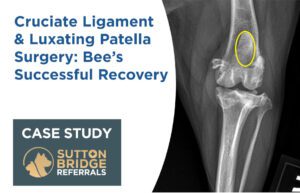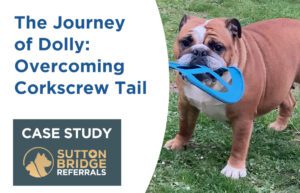Meet Daisy: A Joyful French Bulldog
Daisy is a happy and playful French Bulldog who loves life. Her favorite activity is playing with her ball and running around. However, her owner had to control her exercise because she would exhaust herself. When she was spayed at her vets, the vet also enlarged her nostrils a little, and she became interested in playing with the ball again.
The Onset of Upper Respiratory Noises
More recently, Daisy started to have a lot of upper respiratory noises, such as snoring and stridor, and you could hear “respiratory vibration” when she was walking. Her owner and her vet were worried, so they were proactive, and Daisy came to see our surgeon, Luciano, who accepts referrals from local practices for a variety of health conditions.
Diagnosis: Brachycephalic Obstructive Airway Syndrome (BOAS)
Daisy had a general check and a complete assessment of her respiratory system. Sadly, she was diagnosed with Brachycephalic Obstructive Airway Syndrome, commonly known as BOAS. BOAS refers to a particular set of upper airway abnormalities that affect Bulldogs (French and English), Boxer Dogs, Boston Terriers, Pekingese, Pugs, Shih Tzus, and others.
Understanding BOAS
Mildly affected dogs will have noisy breathing, especially with exercise, and most will snort when excited and snore when relaxed or asleep. Severely affected dogs have more pronounced airway noise, appear to tire quickly with exercise, and may collapse or faint after exercise. Other signs may include coughing, gagging, retching, and vomiting. Signs are often worse in hot or humid weather; affected dogs are more prone to overheating, as the ability to pant to lower their body temperature is compromised. Dogs with BOAS can see an impact on their gastrointestinal tract and may show signs including retching, vomiting, or lack of appetite. Unfortunately, this condition can be life-threatening.
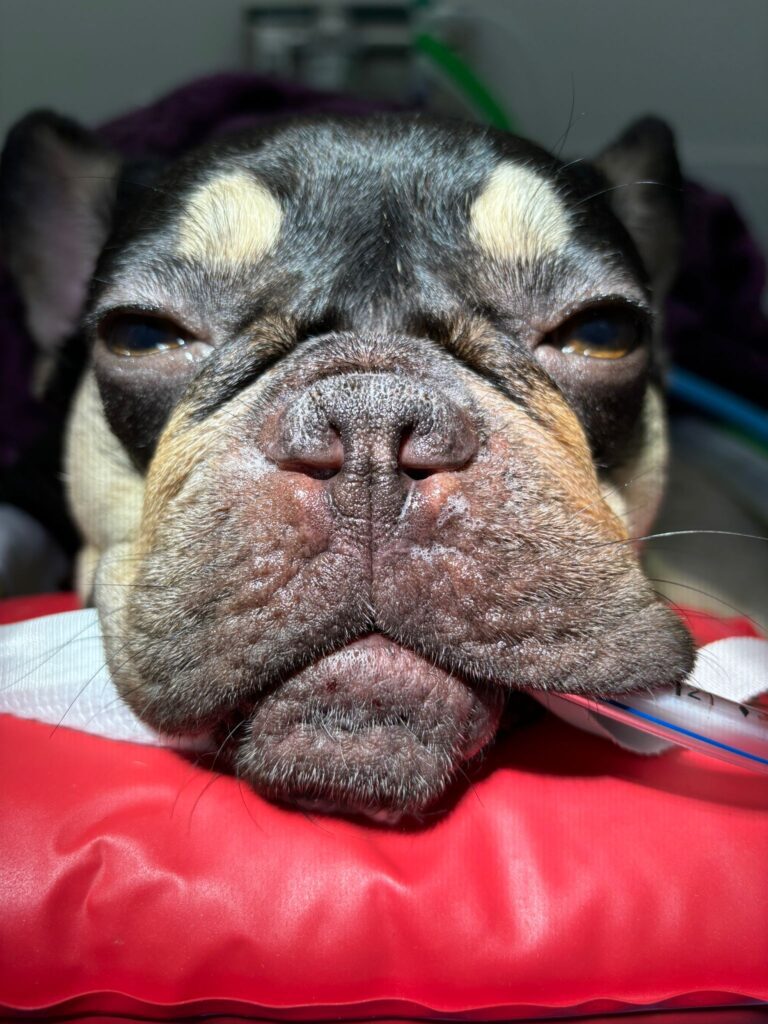
Deciding on Surgery
Daisy’s owner and Luciano had a good conversation, and they decided that the best course of action was to consider surgery, being aware of the potential risks. Operating on airways always carries increased complications, and BOAS surgery involves correcting two to four problematic areas. Luciano also thought that even though Daisy had her nostrils widened before, they could be widened even more, and the nasal passage could be opened up to allow good airflow so she wouldn’t need to breathe with her mouth as much.
The Big Day: Daisy’s Surgery
The big day came, and Daisy was admitted for surgery; you can imagine how apprehensive that can be. Fortunately, a blood test showed that she was healthy and safe to undergo the anaesthetic. We use a particular protocol to anaesthetize dogs with BOAS, which is tried, tested, and reliable. Indeed, Daisy’s anaesthesia was smooth and steady for the joy of our nurses! Before surgery, X-rays were taken of the head, neck, and chest, and we were pleased to see no other problem affecting Daisy.
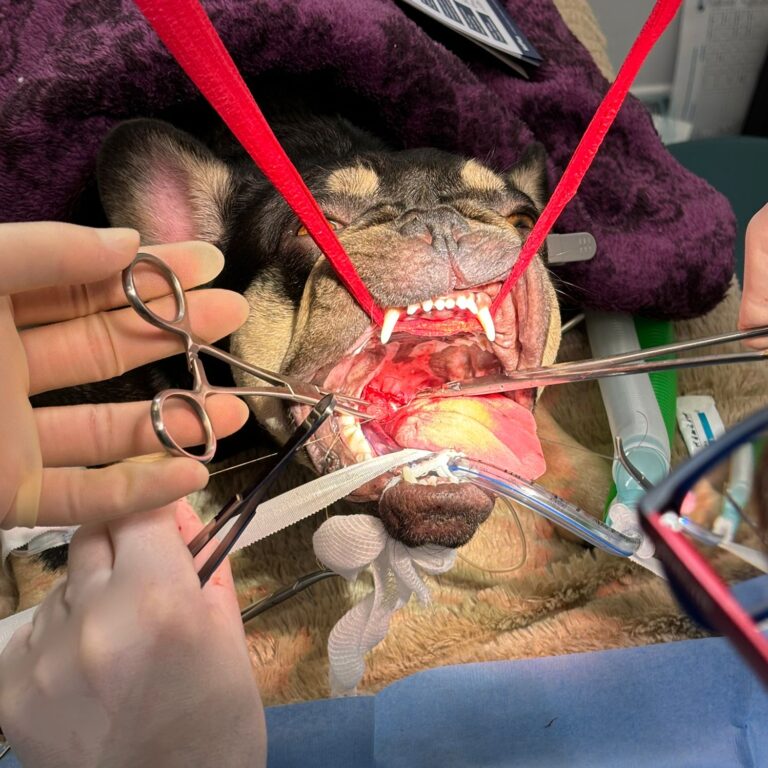
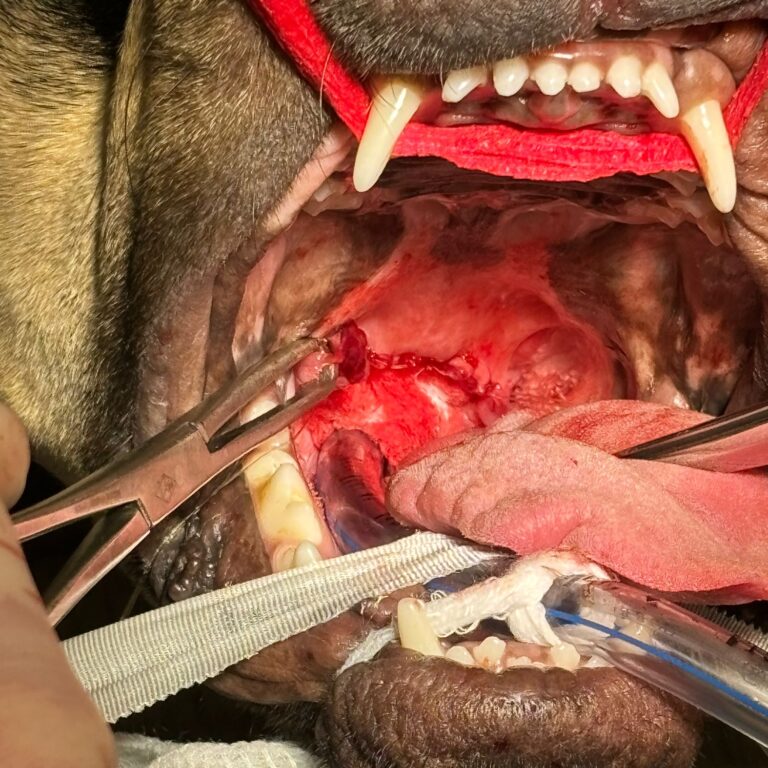
A Successful Operation
Therefore, we had all the green lights to proceed with the surgery while her owner was waiting with trepidation at home. Luciano operated successfully on Daisy by shortening her too-long soft palate, widening her nostrils, and opening the nasal passages. You can see the difference in the pictures!
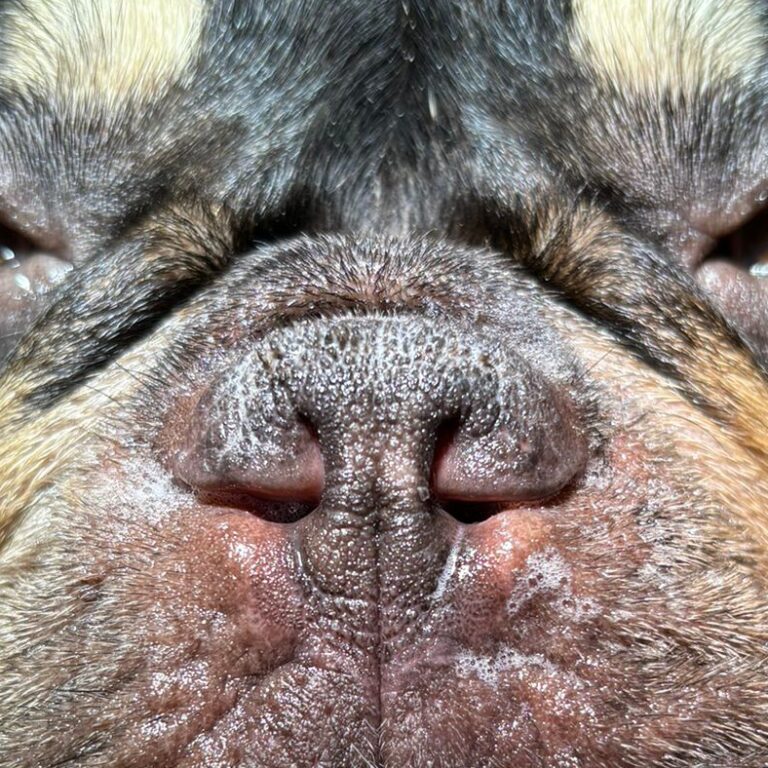
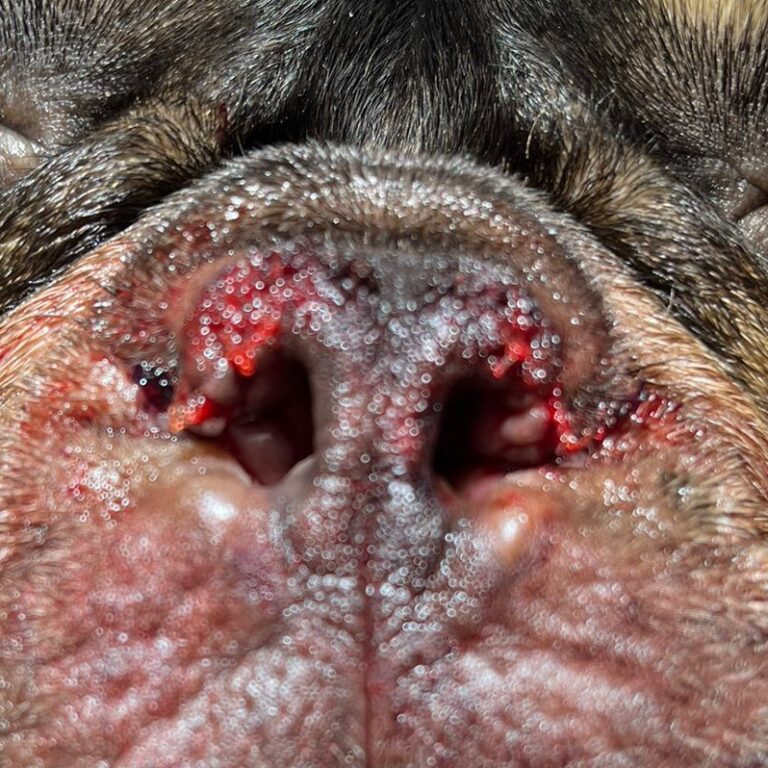
The Crucial Recovery Period
But….Daisy is not out of the woods yet! The recovery from the anaesthetic and the hours soon after surgery are crucial, and complications can happen any time now. We are prepared! We have a “recovery box” where we keep all the medications and instruments needed should any inconvenience arise! The “recovery box” was prepared as soon as Daisy was admitted, and it went with her wherever she was in the clinic, from the hospitalization facility to the imaging suite, to the operating theatre and back in recovery. There is always a higher state of alert in the practice when we have a BOAS patient, and everyone is ready. A few hours passed, and Daisy made a fantastic recovery, so much so that you could see her happily walking outside the practice! We all sighed with relief, and her owner was happy to hear the good news.
A Happy Ending
Daisy went home on a two-week course of medications and had post-op checks at her primary vet, who was satisfied with the outcome and gave her the pass to enjoy life again! What a journey Daisy and her owner went on; they are now happily playing together again.
